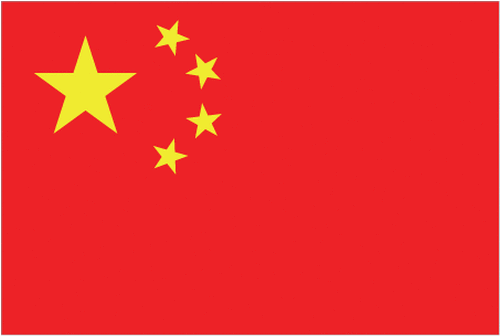
Authored by Jennifer Bradley via RealClear Wire,
The pace of China’s nuclear modernization has been described as breathtaking by Adm. Charles Richard, commander of U.S. Strategic Command. The increased size and sophistication of the capabilities being developed make them a strategic threat to the U.S. and its allies. Along with that threat comes the uncertainty around how large China plans to grow its force.
To deal with this threat, it is tempting to reach for the Cold War playbook and enhance deterrence. Arms control negotiations and agreements played a pivotal role in reducing risk, increasing transparency, and promoting stability between the United States and the Soviet Union. But China is not the Soviet Union, and arms control will not address this threat.
For arms control to be effective, at least two parties must be willing to negotiate. Unfortunately, China is not. Beijing has steadfastly refused to even entertain the idea of joining any nuclear arms control negotiations. It remains opaque on its current nuclear capabilities, its intentions for its nuclear modernization program, and any changes in nuclear doctrine its leaders may be contemplating. It is easy to point to the disparity in the size of China’s nuclear arsenal compared to those of the United States and Russia, but to understand China’s resistance to nuclear arms control, it is imperative to examine its strategic culture.
Understanding the context
The late Colin S. Gray wrote, “Policy and strategy will be influenced by the cultural preferences bequeathed by a community’s interpretation of its history as well as by its geopolitical-geostrategic context.” Assessing strategic culture provides a method for understanding the behavior and decision-making of states, while also guarding against one’s own ethnocentric biases. Examining China’s strategic culture offers insight into its consistent and strong resistance to nuclear arms control negotiations that the United States continues to advocate for.
A preference for secrecy and deception is a key component of Chinese strategic culture that influences its national security policy development. The importance of deception is emphasized in both classical and contemporary Chinese military writings. Sun Tzu, one of the most well-known classical Chinese strategists, stated, “All warfare is based on deception.” But the core components of secrecy and deception as beneficial strategic concepts are peppered throughout modern Chinese strategy documents. They are referred to as methods for enhancing deterrence, or for gaining advantage should deterrence fail. Even Deng Xiaoping’s famous twenty-four-character strategy contained the essential directives to “hide our capacities and bide our time,” relying on secrecy and deception to achieve China’s strategic objectives.
Arms control, in order to be successful, requires a verification regime to ensure that treaty signatories are meeting their obligations. This need for verification is in direct conflict with Chinese cultural preferences for secrecy and deception. Skeptics may counter that China has participated in many other arms control regimes in the past, including the Nuclear Non-proliferation Treaty and the Biological Weapons Convention – and it has signed the Comprehensive Test Ban Treaty, although it has not ratified it. Participating in these treaty organizations bolsters China’s image as a responsible international stakeholder, but secrecy and deception have also influenced Beijing’s involvement in these treaty regimes: China’s record on proliferation runs counter to its obligations under Article I of the NPT, the BWC does not have a formal verification regime that China has to adhere to, and though adherence to the CTBT is voluntary, a report published by the U.S. State Department in 2020 suggests that China has repeatedly blocked the flow of data from International Monitoring System stations used to monitor nuclear testing activity calling into question activities at China’s Lop Nur test sites.
In other words, even as China benefits from the prestige of membership in these arms control regimes, it also subverts its obligations. It is not subject to verification requirements and maintains the ability to hide illicit behavior.
How to maintain real deterrence
If arms control is not a viable solution to address the risk of China’s strategic breakout, then what path should the United States take? Due to the uncertainty and increased risk caused by China’s actions, the United States must hedge against this threat. A hedging strategy is a prudent course of action to reduce risk, strengthen deterrence and assure allies of U.S. commitment to security obligations.
An effective hedging strategy will ensure that the recapitalization of the U.S. nuclear force remains funded and on track. It will promote flexibility of U.S. nuclear capabilities to guarantee the ability to respond to any level of escalation by our adversaries. This flexibility requires continued commitment to the nuclear-armed Sea-Launched Cruise Missile (SLCM-N) in order to compete with capabilities that both China and Russia are developing. Finally, a hedging strategy will not reduce the role of nuclear weapons in national security unilaterally, especially as both China and Russia are increasing the prominence of nuclear weapons in their strategies. These measures are not akin to an arms race, but rather they ensure that the U.S. nuclear force is ready and reliable, and that our adversaries believe it poses a credible threat.
The nuclear threat posed by China is growing – how much so will remain unclear, because of its cultural preferences. This requires the United States take prudent measures to enhance deterrence of China, in ways tailored to this threat and this century, not the last. The uncertainty caused by the growing Chinese threat is uncomfortable – but deterrence has always been an uncomfortable proposition. It relies on convincing adversarial leaders with unique cultures, values, and worldviews that restraint is in their best interests. During the Cold War, leaders in the Soviet Union decided that arms control served their own national security, and the treaty regimes reduced tensions and enhanced deterrence. But until China’s leaders reach that same conclusion, the United States must become comfortable with being uncomfortable. A hedging strategy to ensure our deterrent remains robust and credible will ensure that China remains uncomfortable as well.
* * *
Jennifer Bradley is a Senior Deterrence Analyst at U.S. Strategic Command. The views represented are those of the author and do not represent U.S. Strategic Command, the Department of Defense, or the U.S. Government.
Authored by Jennifer Bradley via RealClear Wire,
The pace of China’s nuclear modernization has been described as breathtaking by Adm. Charles Richard, commander of U.S. Strategic Command. The increased size and sophistication of the capabilities being developed make them a strategic threat to the U.S. and its allies. Along with that threat comes the uncertainty around how large China plans to grow its force.
To deal with this threat, it is tempting to reach for the Cold War playbook and enhance deterrence. Arms control negotiations and agreements played a pivotal role in reducing risk, increasing transparency, and promoting stability between the United States and the Soviet Union. But China is not the Soviet Union, and arms control will not address this threat.
For arms control to be effective, at least two parties must be willing to negotiate. Unfortunately, China is not. Beijing has steadfastly refused to even entertain the idea of joining any nuclear arms control negotiations. It remains opaque on its current nuclear capabilities, its intentions for its nuclear modernization program, and any changes in nuclear doctrine its leaders may be contemplating. It is easy to point to the disparity in the size of China’s nuclear arsenal compared to those of the United States and Russia, but to understand China’s resistance to nuclear arms control, it is imperative to examine its strategic culture.
Understanding the context
The late Colin S. Gray wrote, “Policy and strategy will be influenced by the cultural preferences bequeathed by a community’s interpretation of its history as well as by its geopolitical-geostrategic context.” Assessing strategic culture provides a method for understanding the behavior and decision-making of states, while also guarding against one’s own ethnocentric biases. Examining China’s strategic culture offers insight into its consistent and strong resistance to nuclear arms control negotiations that the United States continues to advocate for.
A preference for secrecy and deception is a key component of Chinese strategic culture that influences its national security policy development. The importance of deception is emphasized in both classical and contemporary Chinese military writings. Sun Tzu, one of the most well-known classical Chinese strategists, stated, “All warfare is based on deception.” But the core components of secrecy and deception as beneficial strategic concepts are peppered throughout modern Chinese strategy documents. They are referred to as methods for enhancing deterrence, or for gaining advantage should deterrence fail. Even Deng Xiaoping’s famous twenty-four-character strategy contained the essential directives to “hide our capacities and bide our time,” relying on secrecy and deception to achieve China’s strategic objectives.
Arms control, in order to be successful, requires a verification regime to ensure that treaty signatories are meeting their obligations. This need for verification is in direct conflict with Chinese cultural preferences for secrecy and deception. Skeptics may counter that China has participated in many other arms control regimes in the past, including the Nuclear Non-proliferation Treaty and the Biological Weapons Convention – and it has signed the Comprehensive Test Ban Treaty, although it has not ratified it. Participating in these treaty organizations bolsters China’s image as a responsible international stakeholder, but secrecy and deception have also influenced Beijing’s involvement in these treaty regimes: China’s record on proliferation runs counter to its obligations under Article I of the NPT, the BWC does not have a formal verification regime that China has to adhere to, and though adherence to the CTBT is voluntary, a report published by the U.S. State Department in 2020 suggests that China has repeatedly blocked the flow of data from International Monitoring System stations used to monitor nuclear testing activity calling into question activities at China’s Lop Nur test sites.
In other words, even as China benefits from the prestige of membership in these arms control regimes, it also subverts its obligations. It is not subject to verification requirements and maintains the ability to hide illicit behavior.
How to maintain real deterrence
If arms control is not a viable solution to address the risk of China’s strategic breakout, then what path should the United States take? Due to the uncertainty and increased risk caused by China’s actions, the United States must hedge against this threat. A hedging strategy is a prudent course of action to reduce risk, strengthen deterrence and assure allies of U.S. commitment to security obligations.
An effective hedging strategy will ensure that the recapitalization of the U.S. nuclear force remains funded and on track. It will promote flexibility of U.S. nuclear capabilities to guarantee the ability to respond to any level of escalation by our adversaries. This flexibility requires continued commitment to the nuclear-armed Sea-Launched Cruise Missile (SLCM-N) in order to compete with capabilities that both China and Russia are developing. Finally, a hedging strategy will not reduce the role of nuclear weapons in national security unilaterally, especially as both China and Russia are increasing the prominence of nuclear weapons in their strategies. These measures are not akin to an arms race, but rather they ensure that the U.S. nuclear force is ready and reliable, and that our adversaries believe it poses a credible threat.
The nuclear threat posed by China is growing – how much so will remain unclear, because of its cultural preferences. This requires the United States take prudent measures to enhance deterrence of China, in ways tailored to this threat and this century, not the last. The uncertainty caused by the growing Chinese threat is uncomfortable – but deterrence has always been an uncomfortable proposition. It relies on convincing adversarial leaders with unique cultures, values, and worldviews that restraint is in their best interests. During the Cold War, leaders in the Soviet Union decided that arms control served their own national security, and the treaty regimes reduced tensions and enhanced deterrence. But until China’s leaders reach that same conclusion, the United States must become comfortable with being uncomfortable. A hedging strategy to ensure our deterrent remains robust and credible will ensure that China remains uncomfortable as well.
* * *
Jennifer Bradley is a Senior Deterrence Analyst at U.S. Strategic Command. The views represented are those of the author and do not represent U.S. Strategic Command, the Department of Defense, or the U.S. Government.





